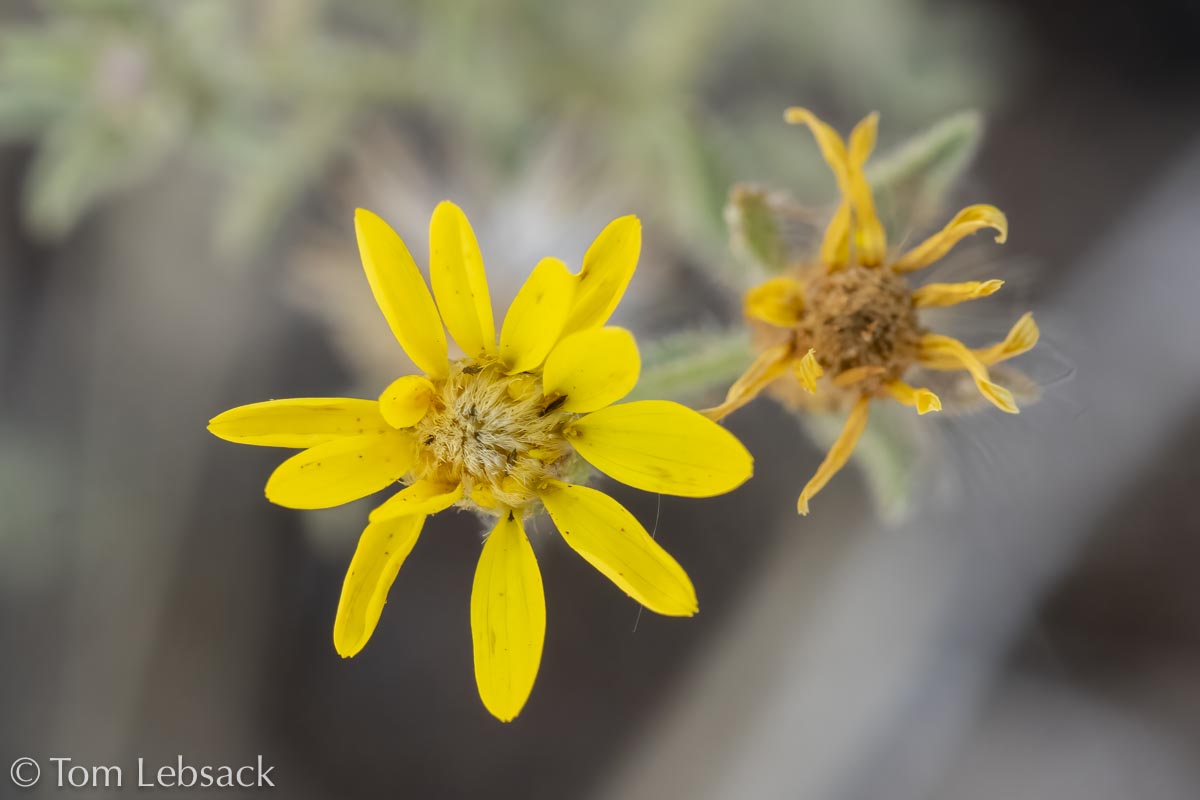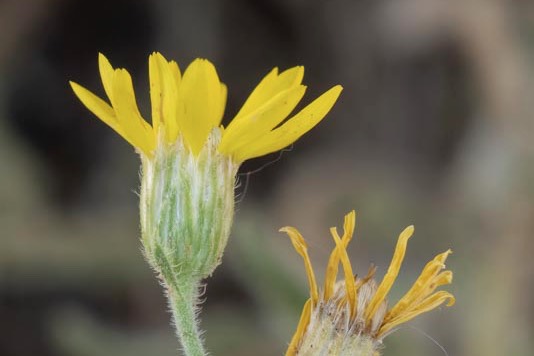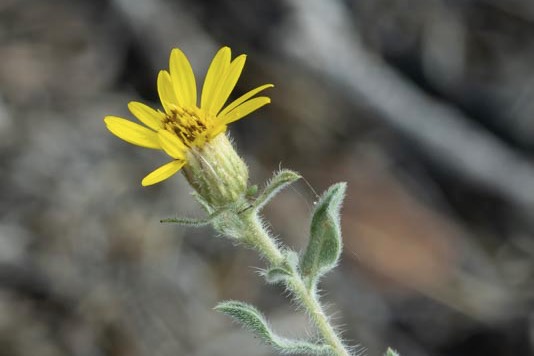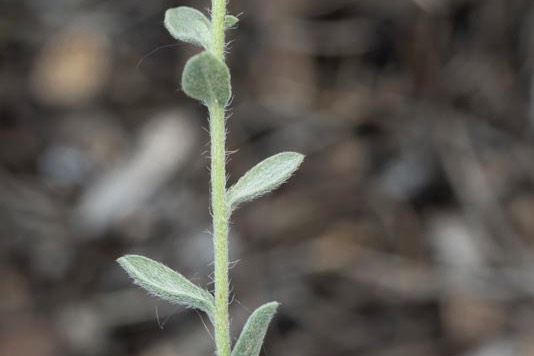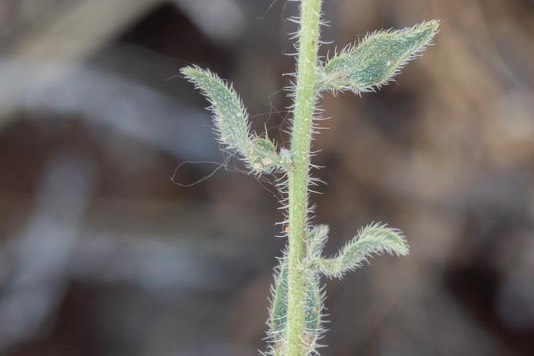Heterotheca villosa var. villosa
(Hairy False Goldenaster)
| Scientific Name | Heterotheca villosa var. villosa | USDA PLANTS Symbol | HEVIV |
| Common Name | Hairy False Goldenaster | ITIS Taxonomic Serial No. | 528399 |
| Family | Asteraceae (Sunflower) | SEINet Reference |
Click Here |
| Description |
Life zones and habitat: Plains and foothills and mesas (3500 to 7500 ft.); dry open soils of various types in sandhill prairies, pastures, grasslands, and roadsides. Plant: Perennial with decumbent to erect stems 6 to 15 inches tall; moderately to densely long-hairy. Leaves: Stem leaves oblanceolate, 3/4 to 1-3/8 inches long; lower leaves are short-petiolate and deciduous; surfaces stiff-hairy or with appressed hairs and not glandular. Inflorescence: One to several or more composite heads with 10 to 35 yellow rays, 3/4 to 1-1/2 inch across; usually no bracts subtending the heads; involucre is narrowly cylindric to bell-shaped; narrowly triangular-lanceolate phyllaries with margins that are often purple-tipped, moderately to densely hairy and not glandular. Bloom Period: May to October. References: "Flora of Colorado" by Jennifer Ackerfield and SEINet. Note: Highly variable species in stem length, leaf hairiness, etc. |
USDA Plants Distribution Map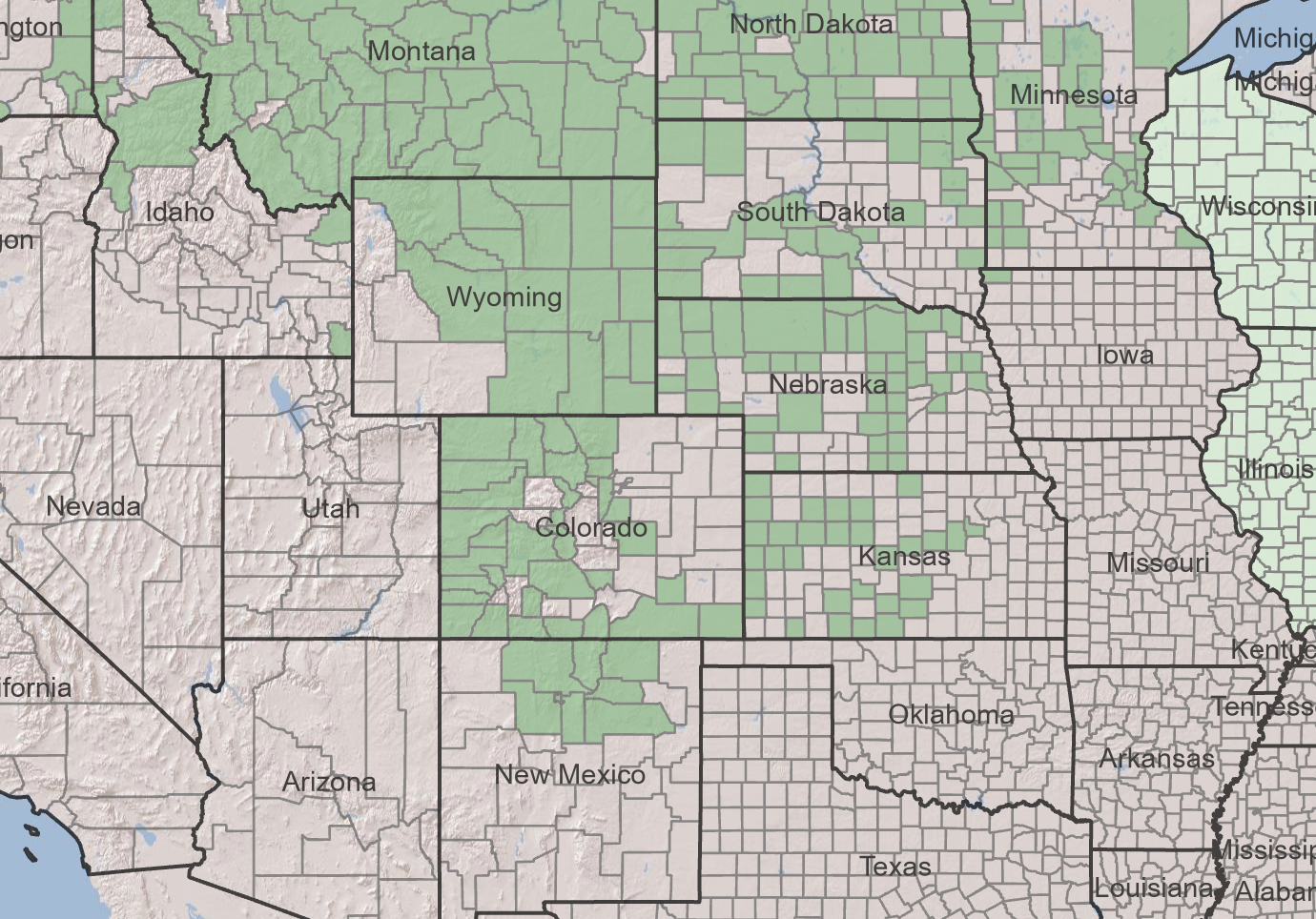 |
Colorado Status: Native |
© Tom Lebsack 2025
Banner photo: Castilleja rhexifolia and a brewing storm over the San Juan Mountains
I try to provide accurate, up-to-date, and relevant information, but cannot guarantee the completeness or accuracy of any information presented on this website. I use authoritative references to insure high standards of accuracy and review and update the information frequently.
